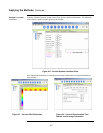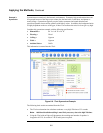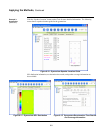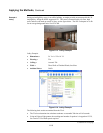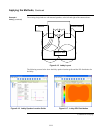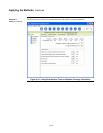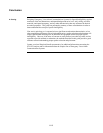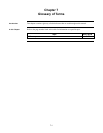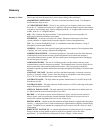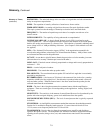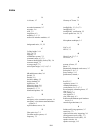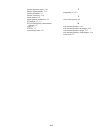
7-3
DISTORTION – The undesired change in the waveform of a signal that can lead to diminished
clarity in reception or reproduction.
ECHO – The repetition of sound by reflection of sound waves from a surface.
FIBER OPTIC RISER – An analog or digital risers that uses fiber optic distribution media.
Fiber optic systems have the advantage of immunity to electrical noise and Earth faults.
FREQUENCY – The number of repetitions per unit time of a complete waveform as of an
electric current.
INTELLIGIBILITY – The capability of being understood or comprehended.
INVERSE SQUARE LAW – A drop in Sound Pressure Levels (SPLs) is referred to as the
“Inverse Square Law.” The law originates from the fact that as the diameter of the sound-sphere
doubles, the surface area increases by a factor of four. This behavior of outwardly radiating sound
causes a drop in SPL of –6dB per doubling of distance. (See Chapter 2 of this manual to see this
law applied.)
NFPA – The “National Fire Protection Agency (NFPA)” is the organization responsible for
several codes and guidelines related to the Fire Alarm/Protection Industry. Many of these codes
are referenced and discussed in this publication.
OCTAVE – A tone that is eight full tones (diatonic degrees) above or below another given tone.
(One tone has twice as many vibrations per second as the other.)
OHM’s LAW – Electrical current is directly proportional to voltage and inversely proportional to
resistance I = E/R.
PHON – A unit of subjective loudness.
PHONEMES – The sounds that make up spoken words.
POLAR PLOTS – The correlation between speaker SPL and off-axis angle that is occasionally
provided by manufacturers.
REVERBERATION – (Also known as T60 times) is the amount of time it takes for a sound to
diminish to 60 dB below the original level. Reverberation is produced when sound reflects off
walls and other surfaces. What the listener hears is the direct sound from the speaker plus the
reflected sound from the reverberation.
RISER – The riser is the wiring that connects the command center with the amplification
equipment. There are several types of risers depending on the application: Analog, Digital, and
Fiber Optic.
SENSITIVITY – The sensitivity is the amount of sound (Sound Pressure Level) produced by the
speaker with a known signal frequency, power level and distance from the speaker.
SOUND PRESSURE LEVELS (SPL’s) – The level of sound pressure that is typically expressed
in decibels.
STI METHOD – An intelligibility measurement method that measures the modulation transfer
function for 14 modulation frequency bands spaced at 1/3-octave intervals from 0.63 Hz to
12.5 Hz, across seven frequency bands from 125 Hz to 8 kHz.
TRANSPONDER – Receives the riser from the command center, amplifies and distributes
signals to the speaker circuits. The transponder also interfaces to detection equipment and other
signaling circuits (strobes, deluge valves, etc.) and communicates status back to the command
center.
Glossary, Continued
Glossary or Terms,
(continued)



